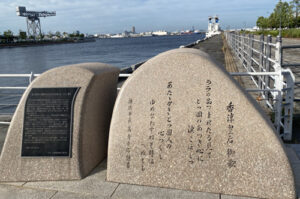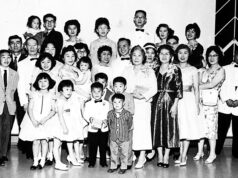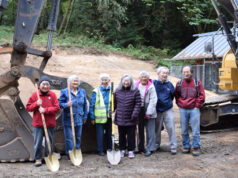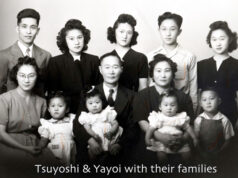By Monica
For The North American Post
Editor’s note.
NAP contributor Monica recently visited the Japanese Overseas Migration Museum, known as the JICA Museum (Japan International Cooperation Agency), Yokohama. The museum was renovated in 2022 for its 20th anniversary.
NAP contributor Monica recently visited the Japanese Overseas Migration Museum, known as the JICA Museum (Japan International Cooperation Agency), Yokohama. The museum was renovated in 2022 for its 20th anniversary.

IF YOU HAVE HEARD Japanese older than 85 talk about what their lives were like right after World War II, there is a good chance that they mentioned the skim milk in their school lunch – how awful it tasted but how thankful they were. Yet, when it comes to where that skim milk came from, few know. It was part of the LARA supplies sent to war-devastated Japan from North, Central, and South America.
What is LARA? LARA stands for Licensed Agencies for Relief in Asia. It was a special organization to help people in Asia including Japan where people were suffering from serious food shortages and malnutrition after the war. LARA consisted of 13 agencies including American religious organizations and social activist groups.
Even less known is that the idea of sending relief goods to people in Japan was first raised among Japanese immigrants, Issei, and their Japanese American (JA) descendants in the U.S. However, the initiative by them was not approved by the U.S. Government. Thus, they decided to approach other organizations that shared the goal of saving people in post-war Japan. These may have included the Council of Relief Agencies Licensed to Operate in Germany (CRALOG), a U.S. charitable organization, which had the experience of running a relief program in Europe (1946 – 1962). Those efforts led to the creation of LARA, which obtained the license to do the same for Asia.
The LARA supplies were sent to Japan from November 1946 to March 1952. They included all sorts of things from milk/dairy supplies and canned food, clothing, medical supplies, to live goats and cows. It is said that one in six Japanese people benefited from the LARA relief program.
Issei and JAs in the U.S. wanted to return the favor given them by Japanese in Japan by sending relief supplies post-war when the latter needed them the most.
When the JAs were incarcerated during WWII, they received supplies from Japan. It eased difficulties in their unbearable lives in the camps.
“Soy sauce was especially appreciated,” said Shigeru Kojima who is a researcher and curator at the JICA Museum. He curated the exhibition on the LARA relief program in 2014.
“You can see the relief goods sent to JAs in the camps in some art pieces by JA artist Henry Sugimoto.”
It is estimated that around 20 percent, or some 8 billion yen (120 billion yen today, or $820 million), of the total value of the LARA relief goods sent to Japan was contributed by people of Japanese descent (Nikkei).
“Imagine how difficult their own lives were after the war, coming out from the camps. Still, they contributed to the effort on this scale. It shows how important and strong they felt their tie to Japan was,” stresses Kojima.
Although Nikkei played an important role in the LARA relief program, most descendants of those who contributed to the program and those who benefitted from it don’t know about it.
“Sharing and passing down the experiences of Nikkei within families and communities is essential to help form Nikkei identities. I want them to realize it is relevant to them and it matters,” says Kojima.
“After I curated the LARA exhibition … I asked some museums in the U.S. if they were interested in hosting the exhibition. Not a single museum was interested. It was a pity.”
Near the JICA Museum, there is a monument commemorating the LARA relief program and the dock where the relief supplies were unloaded. The monument is engraved with a poem written by Empress Kojun (wife of Hirohito) when she visited the LARA warehouse in 1949 with her husband. In her poem, she shares her appreciation for the kindness shown by those living abroad and her determination to not forget it.
Near the JICA Museum, there is a monument commemorating the LARA relief program and the dock where the relief supplies were unloaded. The monument is engraved with a poem written by Empress Kojun (wife of Hirohito) when she visited the LARA warehouse in 1949 with her husband. In her poem, she shares her appreciation for the kindness shown by those living abroad and her determination to not forget it.
After 77 years, there was a stark contrast between the monument —having no one but me looking at it —and the crowded shopping and dining mall right behind it with a constant supply of chic items and fresh food that shoppers would never be able to fully consume. How would those children who had only skim milk and canned food for their lunch feel if they were here today?
Further info on JICA Museum:
Stephanie Ikeda, “From Yokohama to Seattle…” napost.com, Jan. 2019
Stephanie Ikeda, “From Yokohama to Seattle…” napost.com, Jan. 2019
Monica writes on JAs from a Japanese perspective at:
beyondgenerations.seattle@gmail.com
beyondgenerations.seattle@gmail.com




